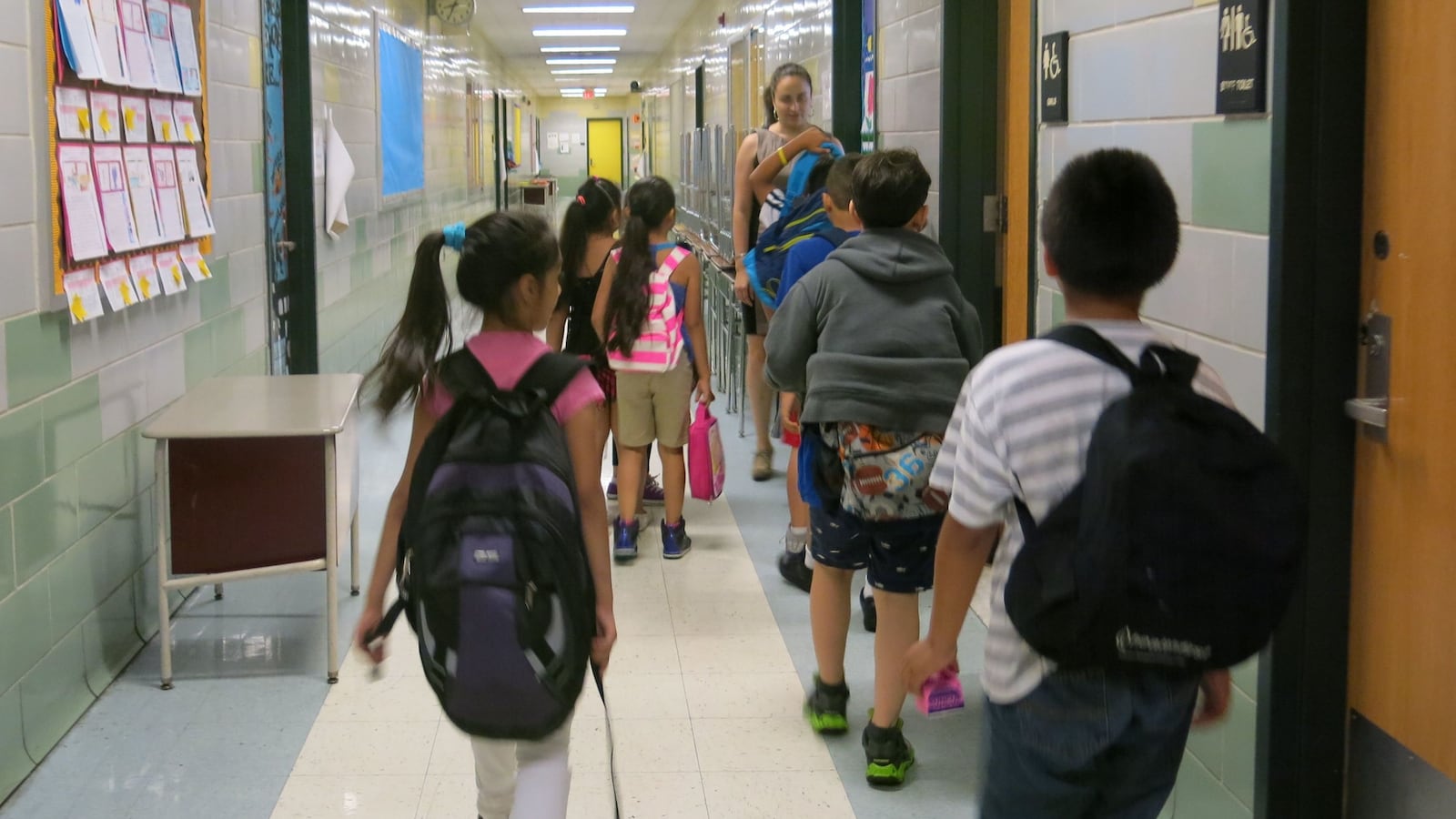The number of school suspensions fell by 17 percent last academic year as the city shifts away from that more punitive approach to discipline, yet schools continued to suspend black students and those with disabilities at disproportionately high rates.
Schools gave out about 9,000 fewer suspensions in 2014-15 than in the previous academic year, according to city education department data released Friday. In addition, arrests by school security officers dropped by 27 percent, and summonses fell by 15 percent, officials said.
The declines come as the city has ordered educators to rely less on removing disruptive students from school and more on addressing the causes of their misbehavior.
But while schools suspended fewer students from almost every group, certain groups continue to be suspended at disproportionate rates.
About 52 percent of suspensions went to black students, even though they represent just 28 percent of students — a wide gap that has narrowed slightly. Students with disabilities received 38 percent of all suspensions, though they make up just 18 percent of the city’s students. That disparity grew somewhat since last year.
Meanwhile, just 7.4 percent of suspensions went to white students, who make up 15 percent of city students. Hispanic students, who make up over 40 percent of students, accounted for 36 percent of suspensions.
The imbalances come amid a national discussion about racial discrimination fueled by the Black Lives Matter movement and increased scrutiny of police presence in schools.
Kesi Foster, a coordinator for the advocacy group Urban Youth Collaborative, applauded the overall reduction in suspensions, which he said reflects the education department’s pressure on schools to move away from that approach. However, he said the department will not be able to end the disparities between student groups without making that an explicit component of its discipline policies and trainings.
The school system must “struggle with those deep questions about racial inequity if we’re going to close the discipline gap,” said Foster, who is a member of a city task force on school discipline.
Suspensions have plummeted since 2012, when the city began publicly reporting those numbers. During that time, the education department also revised its discipline code to emphasize alternatives to suspension.
The department made additional changes to the code this year that required principals to get approval before suspending students for insubordination, and banned a more serious type of suspension for “minor physical altercations.” However, the number of suspensions was already on the decline last year before the new policies went into effect in April.
This summer, the discipline task force issued a report saying that a tenth of the city’s schools give out 41 percent of all suspensions. The 150-member task force recommended that the city invest in extra training and counselors for those schools and create a plan to reduce the discipline disparities among student groups, among other suggestions.
The mayor’s office promised to announce an implementation timeline for the recommendations it would adopt by the start of the school year. However, an education department spokesman said Friday that the city is still reviewing the recommendations.
In addition to revising the discipline code, the city has offered conflict resolution training to school employees and hired more guidance counselors, the spokesman said. The city is also piloting a program where school safety agents will issue “warning cards” instead of tickets.
“While we have taken important steps in the right direction, reducing the need for suspensions and keeping our schools safe remains one of my top priorities — particularly for our black and Hispanic students and our students with special needs,” Chancellor Carmen Fariña said in a statement, “and we are working tirelessly toward that end.”

